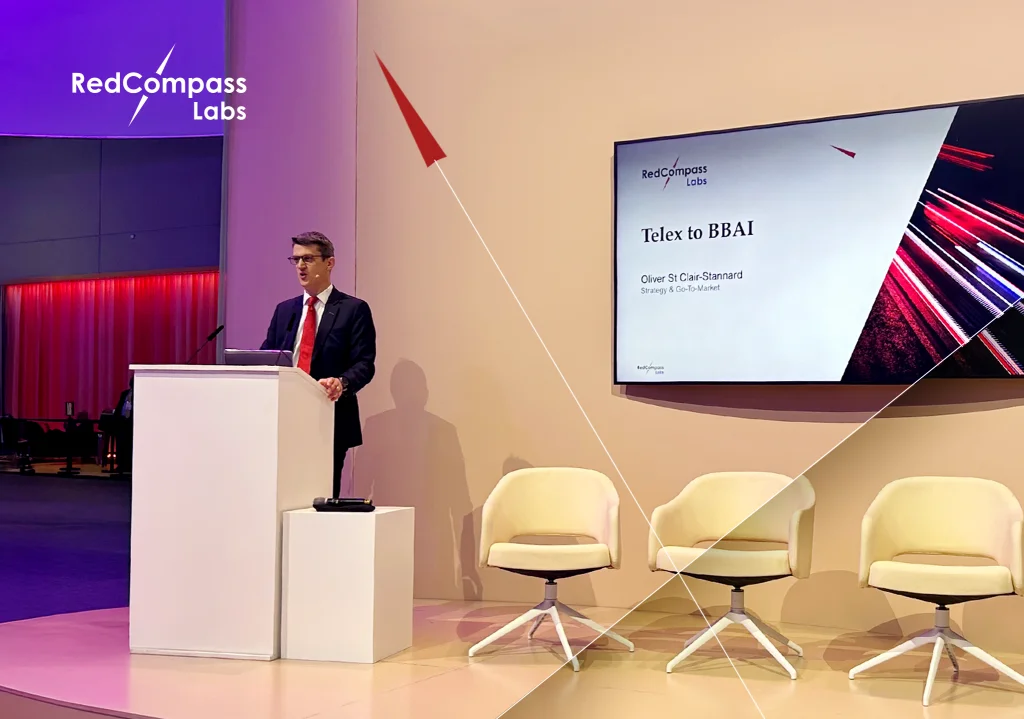TL;DR
-
Australia is retiring its batch payments system (BECS) by 2030, shifting fully to real-time payments
-
The New Payments Platform (NPP) will take over for faster, 24/7 transactions.
- Canada and the US should take note. This trend may likely spread.
On a Thursday afternoon in Sydney, Bill, a café owner, is doing his weekly payroll. It’s been a busy week. Times are hard. He’s been running the day-to-day business and has struggled to stay on top of back-office tasks. So, he’s fallen a little behind.
Bill uploads his payroll file to the bank. It’s the same process he’s used for years — the file comes straight from his accounting software, in the same format, into the same online banking tool. His employees wait. And wait. And wait.
The salaries don’t arrive. The bank has received the file, but because it’s in the old BECS batch format, it won’t be processed until Monday morning. Settlement could take another two days. Bill has missed the cut-off time for the last Friday batch run.
Bill stared at his payroll dashboard, frustration mounting. His employees’ salaries were trapped in the slow-moving gears of BECS—Australia’s aging batch payments system. The money would get there, eventually. But not today.
He knew there was a better way. The New Payments Platform (NPP) could send the funds instantly, any time, day or night. But switching would mean manually re-entering every payment. Hours of work. Time and money he doesn’t have.
The delays don’t go unnoticed. Staff grow restless. Morale dips. And then, the resignations start. A few leave quietly. Others voice their frustration. Bill was stuck between legacy systems and the future—paying the price for standing still.
Bye-bye, BECS
Bill’s problem isn’t unique. Across Australia, businesses that rely on BECS face the same delays every week. But by June 2030, that will change. BECS will be gone — eventually replaced entirely by NPP, a system that moves money instantly, 24/7, with rich ISO 20022 data that banks can read and process automatically.
BECS has long been the backbone for Australia’s scheduled retail payments. It processes a large share of account-to-account payment volume, including payroll runs, utility bills, insurance premiums, and government benefit payments.
But BECS payments are processed in groups at set times. That can lead to delays in getting paid, especially over weekends. A Friday-night transfer won’t be picked up until Monday morning, and settlement can take another two to three days.
Switching rails
NPP, on the other hand, solves multiple problems: it’s ubiquitous. It’s account-to-account, which widens acceptance and usage. And it settles payments instantly on a transaction-by-transaction basis. That helps liquidity for the bank, improves client funds availability and business cash flow.
Over a third of account-to-account payments already flow through the NPP. Capacity, coverage, and governance structures are being upgraded.
The challenge for Australia’s payments industry is to migrate all the payments currently made on BECS to NPP (just like Bill’s).
It’s a bit like trying to move a high-speed train full of passengers from one rail to another. You know the track ahead is ending, so you must act quickly. But you can’t stop the train. So, you need to move your customers over to the new rail without disrupting their journey.
A long way to go
NPP may be fast, efficient, and have many benefits. But it’s still a plain, point-to-point payment rail.
Batch systems like BECS (Australia’s batch payment system), ACH (the US batch payment system), and ACSS (Canada’s retail batch payments network) evolved over decades to handle things like pre-authorized bill payments (where you give a company permission to take money from your account on a set schedule), automated account transfers between banks, cheque processing, and business-to-business payment and invoice exchanges.
Real-time rails are powerful. But not enough on their own.
To truly unlock their potential, we need the tools people actually use: intuitive apps and interfaces that feel familiar. And for businesses, seamless integration into finance systems. Without that, real-time payments remain a backend upgrade, not a front-end transformation.
The payment rails move the money. But they don’t shape the experience.
What users and businesses really need are the features layered on top: intuitive interfaces, smart tools, and seamless integrations. That’s where overlay services come in — like Confirmation of Payee to verify account names, payment initiation, and using simple identifiers like phone numbers or emails (think Australia’s PayID). These innovations make real-time payments usable, familiar, and secure.
Australia’s NPP is transforming how billers manage customer consent through PayTo — a real-time, digital alternative to direct debit. Instead of relying on paper forms or opaque processes, billers can now initiate payment agreements that customers review and authorize directly within their banking app. These agreements are stored centrally, can be modified or cancelled by the customer at any time, and provide instant updates to billers. It’s a smarter, more transparent way to manage recurring payments — and a model that could reshape how consent is handled globally.
Banks can add smart features on top of this, like treating some recurring payments like pre-approved debits or setting custom rules — for example, automatically paying if the amount is under $200, paying half if it’s between $200 and $500, or declining payments over $500.
These kinds of features don’t come from the payment system itself but from the extra services built on top. This setup lets billers connect directly with customers, and gives customers more control over their payments. For example, if you move house, you can instantly update which accounts pay your utility bills without hassle.
Lessons for North America and beyond
So, what’s the takeaway?
Firstly, this is a watershed moment. Australia’s faster payments system is already up and running, and its old batch system has a planned retirement date.
The lesson for other countries, particularly US and Canada, is clear: this is coming for you, too.
The U.S. has two real-time payment systems: The Clearing House’s RTP Network and the Federal Reserve’s FedNow. Canada is rolling out its own Real-Time Rail (RTR). Like Australia’s NPP, these are instant, 24/7 payment rails built on ISO 20022 messaging standards, enabling faster, data-rich transactions. But the rails alone aren’t enough — unlocking their full potential requires intuitive user experiences and seamless integration into business systems.
With Australia, we’re looking at a Western, democratic, industry-led market that’s facing many of the same challenges — just five to ten years ahead. Once a real-time payments system is live and the right overlay services are in place, the shift away from batch payments accelerates quickly.
So as faster payments take off in North America, the same pressures will apply. Payments Canada, for example, hasn’t set a date to end batch payments yet, but discussions about its future are underway.
Australia’s roadmap
Canada could accelerate its progress by following Australia’s roadmap today. Australia acted because its legacy BECS system no longer supports the needs of a digital economy — including instant settlement, richer remittance data via ISO 20022, and greater transparency — while also addressing public interest and regulatory oversight. Not to mention mitigating risks to critical payments (welfare, pensions, salaries), ensuring network reliability and redundancy, improving cost and fee transparency, and operating more efficiently with lower risk.
Real-time payments can handle more complex needs — like business payments, payroll, and pensions — but only if the right extra services support them. The same goes for replacing cheques.
North America needs to ask: How are people paying today? How will they want to pay tomorrow? And how can we make that happen?
Services like Venmo or Zelle in the US and Interac e-Transfer in Canada already handle small, everyday payments that used to be done with cash or cheques. But their potential is limited until they’re fully connected across all banks and offer business-level features.
Australia offers a uniquely relevant example for North America’s payments modernization. Unlike markets like India (with UPI) or Brazil (with Pix), where progress has been largely regulator-driven, Australia’s transformation has been led by banks and industry. The central bank has played a supporting role. This mirrors the governance models in the U.S. and Canada. And that makes Australia’s experience especially instructive. It shows how industry-led collaboration, when paired with the right infrastructure and incentives, can accelerate the shift to real-time payments.
Preparing for the future
Australia’s ambition to retire its old batch system, BECS, is a big deal. For North America, launching RTR (Canada’s Real-Time Rail), The Clearing House’s Real-time Payments network (the privately owned US instant payment service), or FedNow (the government-owned US instant payment service) is just the beginning.
To get the most from these new rails, we’ll need features like request-to-pay, confirmation of payee, alias directories, and other competitive services.
These will transform how we pay bills, how businesses pay each other, and even cross-border payments.
In a few years, once RTP, FedNow, and the Real-Time Rail are widely used, we’ll be asking the same questions Australia faces now.
What happens to our batch systems? When do we build something new instead of patching the old?
Banks that start planning now will be ready to compete. Against each other and against the fintech companies that will jump at the chance to offer better customer experiences on these new payment rails. It’s time to get ready.
Share this post
Written by

David Patrick
Head of Payments Strategy, RedCompass Labs






